Master the Mon: 5 Tips to Make the Most of Your Visit
Embarking on a journey to explore over a million acres of public land in Almost Heaven, West Virginia, promises adventure, tranquility, and breathtaking natural beauty. However, we often experience pre-vacation anxiety, wondering if we have forgotten anything important before stepping out of the house. To ensure a top-notch experience exploring the Monongahela, we will highlight five key things to remember to help you Master the Mon!
1. Navigating the Mon
To guartentee you stay on track during your outdoor adventures, it’s important to download a map beforehand. West Virginia is known for its rugged topography, wilderness character, and the Greenbank Observatory’s Radio Quiet Zone, which means that cell service is not always available. Whether you’re exploring the Monongahela National Forest or any other wilderness area, having a digital map on your device can provide essential guidance and give you peace of mind.
Apple Maps
1. Open the Maps app on your iPhone.
2. Tap your profile icon next to the search field, tap Offline Maps, Download New Map, and enter a location in the search field.
3. Select the area you wish to save for offline use, then tap download.
Google Maps
1. On your Android or iPhone, open the Google Maps app.
2. Tap your profile icon and select Offline Maps.
3. Tap Select your own map, select the area you wish to save for offline use, then tap download.
Forest Maps
In addition to the most popular map apps, you can also download Forest Maps on iOS and Android. This app allows you to download maps of not only the Monongahela but also National Forests across the United States! While not optimized for driving, Forest Maps can be incredibly helpful when hiking, biking, or hunting in the Mon!
2. Cash is King
From a rich, year-round festival culture to roadside vendors, our Mon Forest Towns are full of handcrafted goods, local foods, and one-of-a-kind events. In the digital age, relying solely on cards or mobile payments for our transactions is easy; however, when venturing into the Monongahela National Forest, having cash on hand is essential to make the most of your visit. Though many businesses and vendors do accept digital payments, some events are too remote for reliable internet access. Therefore, carrying cash is the best way to ensure that you can snag that perfect artisan craft or enjoy delicious fair food.
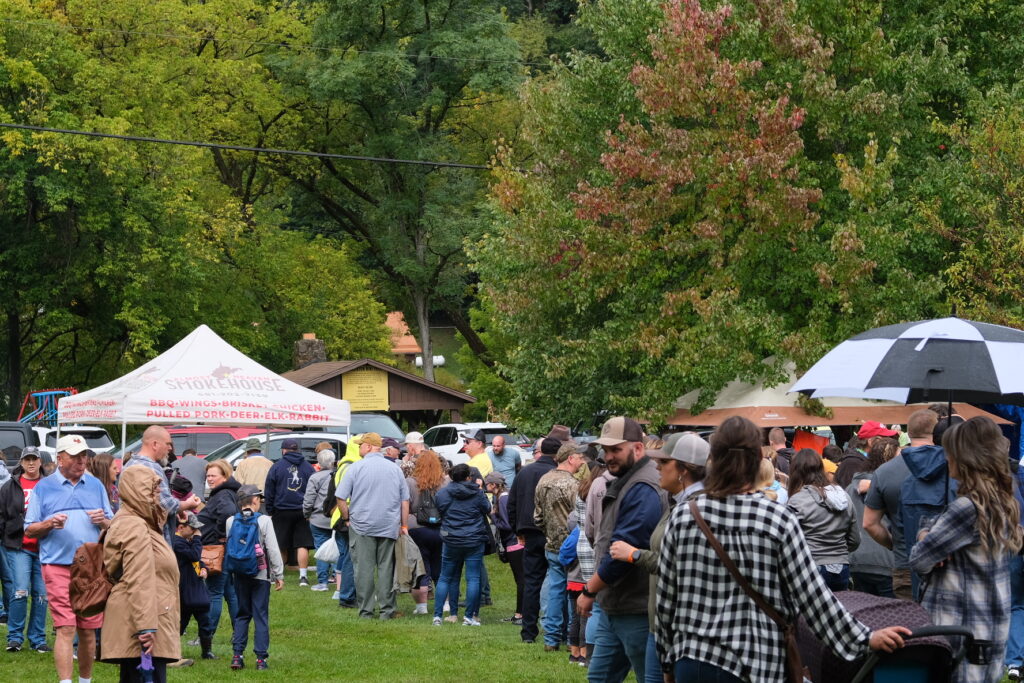
Marlinton, WV’s Annual Roadkill Cookoff and Fall Festival
3. Know Your (& Your Vehicles) Limits
Our country roads and long-distance trails are undoubtedly some of the best parts of the Monongahela National Forest, but it’s vital to understand your and your vehicle’s limitations. Proper preparation ensures your safety and that of others while helping to preserve the Mon’s delicate ecosystem. While the Forest Service manages over 570 miles of remote roads, snow, erosion, and forest debris can add unforeseen obstacles to your trip. Even the most popular routes to locations like Dolly Sods, Bickle Knob, and Table Rock may include steep ascents and sharp curves. Remember to drive slow (the forest isn’t going anywhere!), check weather conditions beforehand, watch for wildlife, and don’t be afraid to call or visit our CVBs and Forest Service Visitor Centers to confirm you and your vehicle are prepared for the trip.
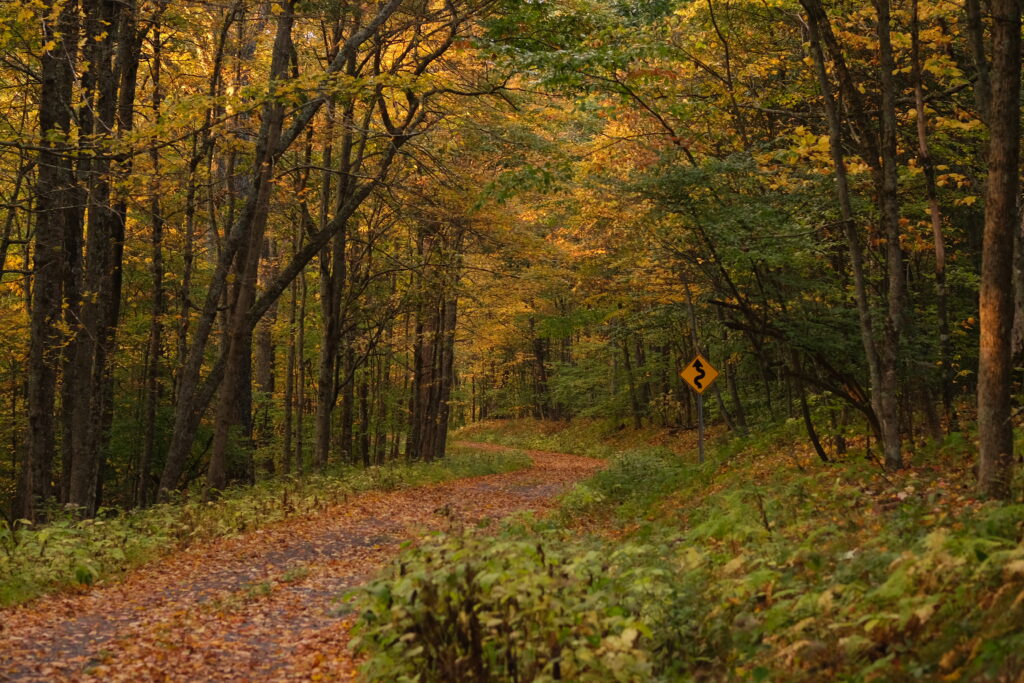
Master the Mon on Forest Service Roads by Driving Carefully and Knowing Your Vehicle’s Limits
4. Get Ready to Learn
Don’t miss out on the chance to expand your knowledge and appreciation for the outdoors through nature walks and outdoor volunteer events in the National Forest and West Virginia State Parks. These learning opportunities not only allow you to connect with nature but also offer insights into conservation efforts and ecosystem dynamics. Whether you’re embarking on a guided hike to discover local flora and fauna or lending a hand in habitat restoration projects, these experiences help to enrich our understanding of the natural world while making a positive impact in forest communities. Educational programming and activities for all ages are available year-round and can be found on the West Virginia State Parks Events page, Mon Forest Towns social media, and at our local visitor centers!
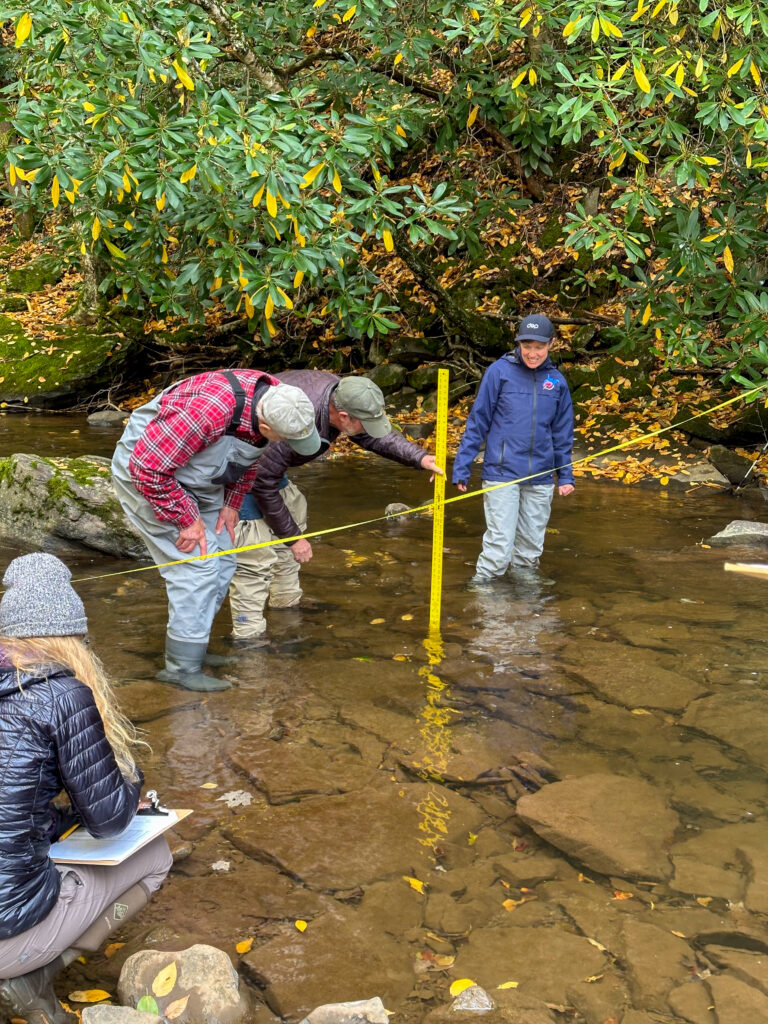
Macroinvertebrate River Surveys with Save Our Streams
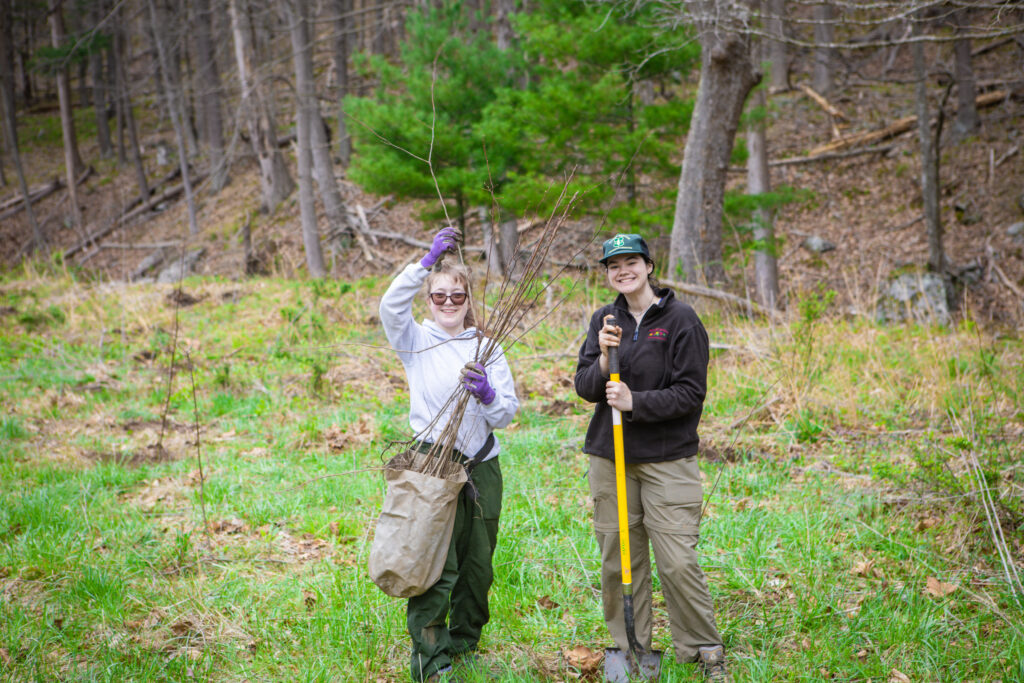
Tree Planting with Forest Service
5. Plan Ahead
When visiting the Monongahela National Forest, planning ahead is important to make the most of your experience, especially for special events and activities that may have limited availability. By scheduling in advance, you can ensure you don’t miss out on popular opportunities like guided hikes at Blackwater Falls, train rides at Cass Scenic Railroad, rock climbing adventures at Smoke Hole Canyon, Nelson Rocks, and Seneca Rocks, caving expeditions in White Sulphur Springs, and seasonal festivals. Additionally, it’s wise to have a rainy day plan in place by exploring indoor attractions such as museums and art galleries nearby, such as the Appalachian Forest Discovery Center, WV Railroad Museum, and Kump House in Elkins or the Snow Sports Museum and Arts District in Tucker County. This way, even if the weather doesn’t cooperate, you can still immerse yourself in the rich culture and history of the region while staying dry and entertained. Plan ahead and make your visit to the Monongahela National Forest unforgettable, rain or shine!
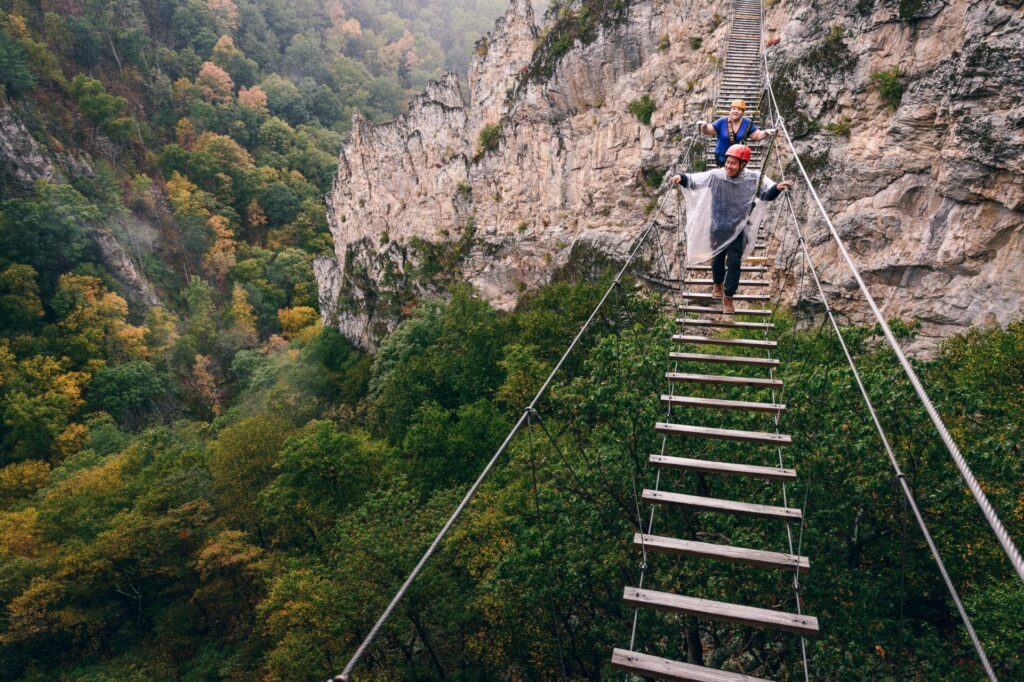
Rock Climbers Cross Bridge at N-Rocks, Photo Courtesy of West Virginia Tourism